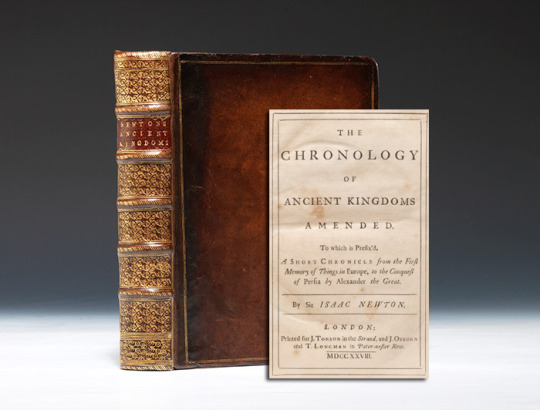By Adrián MaldonadoThis post is an interim report. I have found that reading about the history of the fantasy genre has taught me something important about the history of archaeology itself. In my last post, I showed that Robert...

This post is an interim report. I have found that reading about the history of the fantasy genre has taught me something important about the history of archaeology itself. In my last post, I showed that Robert E Howard, creator of Conan the Barbarian, was building his Hyborian Age around the same time as JRR Tolkien was conceiving Middle-earth. For all their interest in the ancient past, neither author knew much about archaeology, a discipline that was still just gaining legitimacy in the 1920s and 30s. And yet their writings have much in common with the archaeological stories of European prehistory emerging at the time.
In other words, fantasy and archaeology grew out of the same origin stories, and they both carry similar baggage as a result. Let’s poke around in that dirty laundry for a bit.

Barbarian baggage (source)
Tolkien and Howard are not seen as being in the same league as writers; indeed, they are treated as opposite ends of the fantasy genre: high fantasy vs swords and sorcery. But the more I look into it, the more I’m surprised by the parallels in their trajectories.
I’m also realizing the parallels they share with another master worldbuilder working at the same time: archaeologist Vere Gordon Childe. To Childe we can attribute the first scientific ‘grand narrative’ of European prehistory, as opposed to Tolkien and Howard’s fictional prehistories. Childe’s career-establishing volume, The Dawn of European Civilisation (1925), was the standard text on the matter for a generation, and went through six editions in his lifetime. Alongside his academic work, he continually wrote companion books about prehistory for the layperson, making him a household name as much as any archaeologist of the time. He was even name-checked by Indiana Jones (though sadly not in a film that I consider canonical).
***
Tolkien, Howard and Childe, born on three different continents around the turn of the 20th century, would go on to shape the western vision of its own ancient past, though there is not much evidence that they knew of each others’ work. Let’s just start with how closely their careers overlap in time:
JRR Tolkien (1892-1973). Born in South Africa to English parents; moved to England at the age of three. Began degree in Classics at Oxford University in 1911, but changed to English; graduated 1915. Professor of Anglo-Saxon, then English Language, at Oxford 1925-1959. Lecture entitled ‘Beowulf: The Monsters and the Critics’ (1936) promoted the literary value of myth. Major works: The Hobbit (1937), The Lord of the Rings (1954-55), The Silmarillion (posthumously in 1977).Vere Gordon Childe (1892-1957). Born in Australia to English parents; degree in Classics at University of Sydney in 1911-1913, then Oxford University for a BA in Classics and BLitt in Archaeology 1914-1917. Professor of Archaeology at Edinburgh University, 1927-1946, then Institute of Archaeology, London, 1946-1956. Major works: The Dawn of European Civilization (1925, 6th edition 1957), The Aryans: A Study of Indo-European Origins (1926), Man Makes Himself (1936), The Prehistory of European Society (posthumously, 1958). Robert E Howard (1906-1936). Born in Texas, USA. First short story published in Weird Tales in 1925. Essay entitled ‘The Hyborian Age’ (1936) established a shared timeline for his Kull, Conan and Bran stories. Committed suicide in 1936. Reprinted collections helped spur the fantasy revival, including Conan the Conqueror (serials 1935-36, hardcover edition 1950), King Kull (serials 1929-1931, paperback 1967), Bran Mak Morn (serials 1930-1932; paperback 1969).There are some interesting coincidences here, not least the fact that Tolkien and Childe both overlapped at Oxford, though there is no evidence they met or sat any of the same lectures. It is harder to show the link between either of them and Howard, who was born 14 years later, but despite the age gap, all three men began building their past-worlds during or in the immediate aftermath of the Great War. Tolkien was first struck by the name Earendil in an Old English poem in 1914, and began writing the stories that would become The Silmarillion by 1917. Childe began his life-long quest for the Indo-Europeans during his years at Oxford (1914-17), and it is surmised that much of what became his 1926 book The Aryans was based on his research during those years. Howard, as recounted in my last post, first discovered the Picts in a New Orleans public library in 1919, and by high school was already writing essays about the peopling of prehistoric Europe.

There goes the neighbourhood (source)
What really joins all three is that they are all, in their own way, prehistorians. Though Tolkien and Howard are best known for their pseudo-medieval worlds, they both explicitly tried to create links between their fictional worlds and our own prehistory. Thanks to the careful archival research of Tolkienists, we can track the evolution of Arda from its origins as a mythical history of England. As late as his time-travel story, the Notion Club Papers (1945), Tolkien was experimenting with ways of connecting his legendarium with English prehistory or early medieval history, the two timelines interrupted by a cataclysmic flood. Howard’s Hyborian Age independently used the same device – an Atlantis-like cataclysm that reshaped the Earth into the shape we know it today. Howard and Tolkien were both in the business of crafting proto-prehistories of Europe.
Both authors claimed these were only devices to help the stories feel realistic. But Tolkien never severed the connection to England: in his letters from the 1950s, he explains that his Ring cycle took place on our Earth, with Hobbiton at the latitude of Oxford and Minas Tirith at the latitude of Florence, but 6000 years before our histories begin. “As far as I know,” he wrote enigmatically in 1958, “it is merely an imaginative invention”. As for Howard, his Hyborian Age ends by outlining how our modern European ‘races’ connect with his fictional ones, for instance: “The Gaels, ancestors of the Irish and Highland Scotch, descended from pure-blooded Cimmerian clans.”
***
There are volumes to be written about all this, but for the
current post I just want to keep it about archaeology. From 1925-1958,
archaeologist Gordon Childe published some 25 books and
pamphlets on European prehistory, many of which, including his Dawn (1925), Man Makes Himself (1936) and his final work The Prehistory of European Society (1958), took all of Europe as
their canvas, crafting a rich narrative with a time-depth even Tolkien would
approve of. Like Tolkien and Howard, Childe
was similarly attracted by the gaps and silences of the past. His interest in the Indo-European
proto-language soon transformed into a quest for archaeological evidence
for the peopling of Europe itself. The later 19th century had seen
an explosion
of national archaeologies, in which the emerging nation-states of Europe
each sought to trace (or create) a unique ‘national character’ rooted in the
ancient past. Childe, like many others, was enthralled by the discovery of
these ‘cultures’ and did more than most to establish their scientific basis through
the study of artefacts. But in his visits to museums across Europe, he began to
see patterns cutting across national boundaries. The Dawn (1925) was his first attempt at joining the dots and
telling a coherent story of the prehistory of Europe as a whole, and he would
spend his life refining it.

Prehistory: all the cool kids are doing it (source)
In a time before the radiocarbon dating revolution of the 1950s, and when the concept of prehistory itself was still fairly recent, almost any vision of the deep past was based on a certain amount of conjecture. Even the Dawn’s scientific, fact-based version still retained elements of the fantastical, with technologies like farming and metallurgy being ‘diffused’ by wandering prospectors and adventurers. And more than Howard and Tolkien, his prehistories were inextricably linked to modern Europe. Towards the end of his Bronze Age (1930, p 239), he explained the weight of what he was describing: “The general economic and social structure that may be inferred from the Late Bronze Age remains persisted with surprisingly superficial modifications throughout the Roman Period in many parts of the Empire…Even in the British Isles many elements of pure Bronze Age culture survived unchanged by subsequent migrations and invasions till late in last century”.
***
Childe’s prehistories did not survive the radiocarbon revolution, but the tropes of the world he built remain embedded in the archaeological genre which he helped create, as evidenced by the number of archaeological symposia and edited volumes about his continued influence. So the question remains – why were Tolkien, Howard and Childe busy reimagining prehistory in the interwar years? One stab at a short answer is that they all touched on a similar nerve in a heightened time. All three men took a cold, hard look at the old values that had led the world to war, and rejected them for an alternative history, one that looked beyond the great empires of the Mediterranean and Mesopotamia, which by now seemed too much like the collapsing empires of their own time.
But they were not alone, and not the first to do so. Across Europe and throughout the 18-19th century, there were movements to rediscover lost pasts, which we now dismiss as ‘antiquarianism’. These amateur practitioners and part-time scientists established the national collections of artefacts and compendia of ancient texts which allowed the modern academic disciplines of archaeology, history and linguistics to emerge. The appreciation of “cultures” which preceded Rome, the barbarians of Howard’s work and elves of Tolkien’s, has a long pedigree, and resulted in the emergence of a bipolar Celtic and Germanic inheritance for western Europe. Tolkien, Childe and Howard were all innovators, but were also continuing a discussion that had begun a century ago. It’ll be interesting in a future post to track the ways in which the progenitors of all three genres – high fantasy, swords and sorcery and European prehistory itself – accepted or rejected these stories in the worlds they built.
***
Follow us on @AlmostArch













